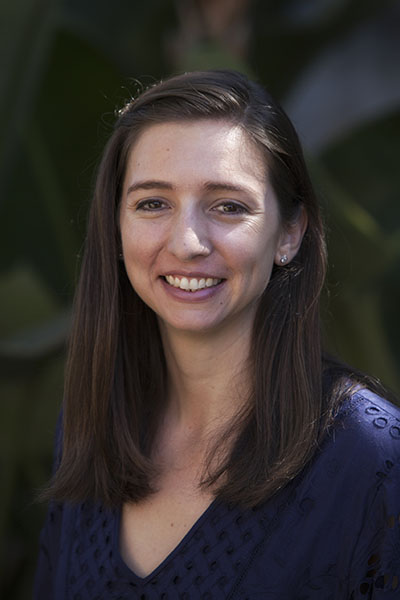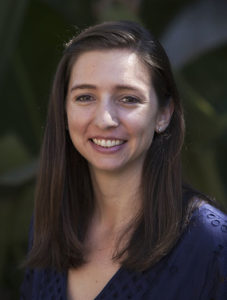CIRCL perspectives offer a window into the different worlds of various stakeholders in the cyberlearning community — what drives their work, what they need to be successful, and what they think the community should be doing. Share your perspective.
Pati Ruiz, Ed.D, is an experienced educator and CIRCLEducator. She has more than 16 years of experience teaching Spanish and computer science in 6 – 12 grade classrooms.
Pati completed her Ed.D in Learning Technologies at Pepperdine University where her research focused on the intersectional identities of young women, the distribution of power in computing, and the elements that support, promote, and sustain the participation of women and traditionally underrepresented minorities in technical fields. Through her study, she wanted to gain a better understanding of the lived experiences of underrepresented women in undergraduate computer science (CS) and engineering programs in order to understand the factors that lead to their pursuit of the degree and their persistence in these programs. Pati is now a researcher on the learning sciences team at Digital Promise Global where her research interests include teacher learning, K-12 classrooms, computer science education, and broadening participation in computing. She also serves as a mentor for young women in CS and engineering fields and works to create inclusive learning and work environments that reflect a diversity of experience and perspectives.
How did you get started in cyberlearning?
Judi Fusco taught my first course in learning sciences at Pepperdine which was titled: Cognition, Learning, and Technology. She introduced our class to the cyberlearning community and we spent time exploring CIRCL primers, perspectives, cyberlearning projects. Cyberlearning work resonated with many of us and the underlying research helped many of us deepen our understanding of and learn to extend the work that we were doing in our classrooms and learning spaces.
Before my formal introduction to the cyberlearning community, I majored in Operations Management and Information Systems (OMIS) at Santa Clara University where I became interested in the use of technology to enhance learning. Along with other OMIS students, I helped retrofit an old school bus to create a mobile computer lab. We put a generator, shelving, and desktop computers in the bus and took it out to elementary schools in San Jose and Santa Clara, CA. Most of these schools did not have computer labs or enough computers in each classroom for students to have formal technology classes so we worked with elementary school students and teachers to teach basic computer skills. Introducing students and teachers to technology tools and providing access to communities that might not otherwise have access to computers sparked my interest in education.
After graduating college, I applied for an AmeriCorps teaching program and was placed at a school in San Jose, CA. During my AmeriCorps year, I taught computer classes and supported other teachers’ use of technology. I also began working on my California teaching credential in Spanish which lead to a career in K-12 schools in roles including teacher, Directory of Learning Technologies, and Dean of Studies. Through my work teaching computer science, I realized how inaccessible the computer science and tech worlds had been to me as an undergraduate and I decided to make that the topic of my dissertation research. I hope that my work will help us understand the experiences of a few underrepresented women and spark conversations about designing inclusive learning and workplace spaces across the technology and computer science landscapes.
What do you share with teachers who are interested in Cyberlearning?
What I enjoy most about my work is the opportunity to have conversations with teachers about enhancing students’ learning experiences with pedagogical strategies and technology (when appropriate). I share my cyberlearning ideas with educators through writing and participation in community groups like CSTA and ISTE. When I’m working one-on-one with teachers, I’m likely to share a story and hear their stories and find common interests through sharing our experiences. I find that taking a coaching and conversational approach allows me to connect educators with a specific cyberlearning project or STEM for ALL video that they might find helpful.
The Buddies Program at recent Cyberlearning meetings was an effective way to get practitioners, like me, talking and working with researchers in the cyberlearning community. I learned a lot from the researchers at the Cyberlearning 2016 (CL16) and Cyberlearning 2017 (CL17) meetings in DC. Having time at a face-to-face meeting to have a conversation, ask questions, and bounce ideas around was very valuable. It was a great environment to learn from researchers and engage with other practitioners!
How do you think the Cyberlearning community can stay connected to teachers?
The Cyberlearning community can connect with practitioners by inviting them to participate in events like the NSF Video Showcase. I had the opportunity to serve as a facilitator for the 2016, 2017, and 2018 Showcases where researchers shared short videos that depict their work aimed at the STEM community. The beauty of the showcase is that it happens online and as a practitioner, I had an opportunity to engage in conversations with researchers about their projects – the comment sections below these videos became rich spaces for researchers and participants to discuss these projects. There were several projects I was particularly interested in that I wrote about for CIRCL Educators. I was excited to learn about embodied learning, for example, which includes using gesture for learning science concepts. Having students use body movements and eventually being able to track those body movements to see how all of that can be applied to fulfilling learning objectives was really exciting! I even brought some of the projects I learned about through the Showcase, like EarSketch, into my classroom. Other topics I enjoyed learning about included how virtual reality can be used for students with learning differences and the importance of using a framework like Universal Design for Learning (UDL) to design inclusive learning experiences. It’s important to apply these lessons with all populations, ensuring that materials are accessible to all. In my computer science classes, for example, we would often discuss types of considerations (color, contrast, alternate text, etc.) we should have so that the websites that my students were designing could be used by all. Finally, Twitter is part of my professional learning community and I frequently share relevant content there and often see the Cyberlearning community share content there.
What are you thinking about right now?
As someone who left computing after having pursued a computer science related undergraduate degree, I am particularly interested in working to increase girls’ and women’s meaningful participation in computing and technology spaces. Computer science, after all, is a fundamental skill and everyone needs to understand and participate in our increasingly digital world. I also identify as a Latina and am committed to supporting the development of diverse, inclusive, and engaged tech communities by raising awareness about the opportunities available in technology fields. So, I am thinking about the best ways to share the rich history of women and underrepresented minorities in computer science and how this content might be used in the design of engaging learning experiences for all students. Computational thinking (CT) and computer science education are two areas of interest for me. Specifically, I want to learn more about where CT and CS fit within the K-12 curriculum and how these concepts, practices, and perspectives can be assessed.
Finally, I am constantly finding new areas of interest when I explore the Cyberlearning Community Report or read the CIRCL newsletter. My hope is to keep learning with this community and to help more educators find and participate in this important work so that they can continue to create learning environments that deepen learning and inspire a sense of wonder.


